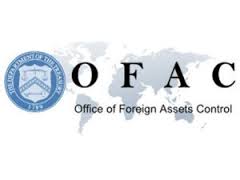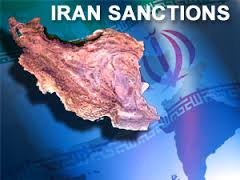Complicating Sanctions Compliance: OFAC Redefines 50 Percent Rule
 Companies are worried more and more about sanctions compliance. As the number and complexity of sanctions grow, depending on the twists and turns of our foreign policy, companies are whipsawed in the area of sanctions compliance.
Companies are worried more and more about sanctions compliance. As the number and complexity of sanctions grow, depending on the twists and turns of our foreign policy, companies are whipsawed in the area of sanctions compliance.
The Treasury Department’s Office of Foreign Asset Control tries to keep everyone informed and is often available for consultations. It has a hard job. OFAC expects a lot from companies and it holds them to a high standard.
The Ukraine sanctions against Russia have been difficult to follow as companies try to stay up with Executive Orders and follow-on OFAC regulations. The list of country-sanctions continues to grow, while Specially Designated Nationals are added every week to the growing list of prohibited persons.
In a recent announcement, OFAC complicated life a little more for the business community by addressing its so-called “50 Percent Rule.” See Here for copy of Release.
OFAC’s revised policy addresses the ownership requirement under which a person related to an SDN has to be blocked under OFAC regulations. Going back around six years ago, OFAC adopted a policy that ownership for purposes of sanctions extends to any entity that is 50 percent or more owned by a single SDN.
Thus, under the existing rule, if three SDN individuals equally owned an entity (33.3% each), respectively, the 50 percent rule would not apply because no single SDN owned 50 percent or more of the related entity. The 50 percent rule was adopted in response to concerns expressed by businesses relating to the Belarus sanctions and the difficulty in determining what entities were related.
The 50 percent rule, if applicable, to block a related entity extended to any subsidiary of the related entity.
Under the new policy announced by OFAC, the fifty percent rule has been reinterpreted to apply to situations where multiple SDNs own fifty percent or more of a related entity.
So, for example, if two SDNs own 30 percent, respectively in a related entity and a third non-SDN entity owns the remaining 40 percent, the entity itself will be blocked and any subsidiary or subordinate entity would be blocked as well. The new policy, as defined in the example above, is satisfied because multiple SDNs (each owning 30 percent) own 50 percent or more of the related entity.
OFAC provided some examples of how the new policy will be enforced. One is interesting to note.
If Blocked/SDN Person X owns 50 percent of Entity A and 50 percent of Entity B, and Entities A and B each own 25 percent of Entity C, then Entity C is considered blocked.
 OFAC compliance has become much more complicated, and the new 50 percent rule, will make it even more so. Companies will have to identify owners in related companies and apply the rule for multiple SDNs – life will easily turn into a headache.
OFAC compliance has become much more complicated, and the new 50 percent rule, will make it even more so. Companies will have to identify owners in related companies and apply the rule for multiple SDNs – life will easily turn into a headache.
Companies that may be dealing with SDNs under the 50 percent threshold should undertake a review of these relationships, as well as establishing new due diligence procedures for identifying SDNs.















